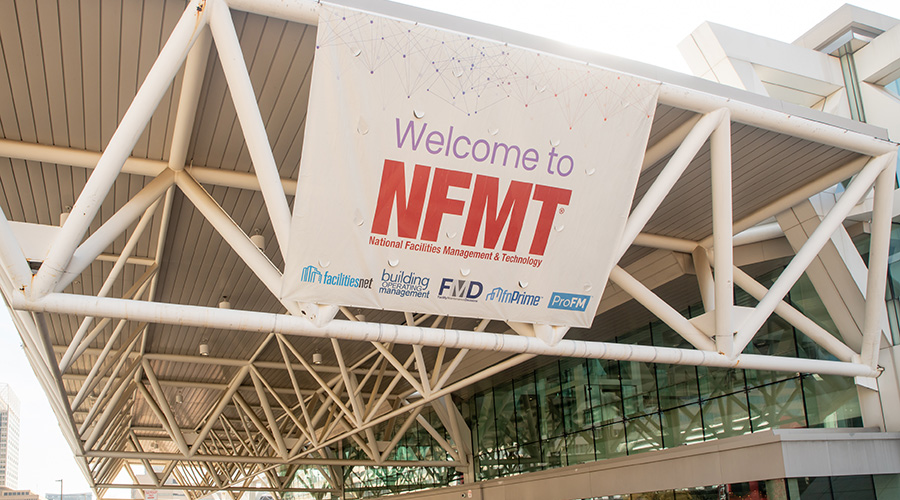Tools for Measuring Organizational Performance
Facilities managers can use tools like the balanced scorecard, CMMS, and performance metrics to align their work with organizational strategy
One of the best tools for measuring organizational performance is a balanced scorecard that identifies the organization’s strategic objectives — the most important goals that must be achieved. They are high level, and typically there are between three and five.
For a facilities organization, the goals often focus on customer service, facility or system reliability, efficiency, safety and cost. Out of the strategic objectives come:
- goals framed as an outcome, or what success looks like
- initiatives, meaning specific actions the team will take to accomplish the goals
- metrics, or the way to measure success.
Other tools for measuring performance include computerized maintenance management systems (CMMS), energy management systems (EMS) and integrated work management systems (IWMS).
CMMS are foundational in understanding the assets managers have under care, the way they are performing and their maintenance history. Their data is used for workload planning, capital budgeting needs and facility performance optimization. EMS focus on the way facilities use energy. They can be used for monitoring and measuring, as well as for controlling HVAC and lighting systems. IWMS also include space planning and management functions.
Managers can use data from a CMMS, IWMS and EMS at a granular level to inform daily operational decisions, but they also can use it at a higher level as input to the balanced scorecard as a way to measure and monitor organizational performance.
For example, managers can monitor scheduled maintenance tasks daily or weekly through the CMMS, then use roll-up metrics to review preventive maintenance completion rates and preventive-to-corrective maintenance ratios. At the highest level — the balanced scorecard — managers also might monitor uptime.
Common challenges
I have seen several common challenges in organizations when setting up a performance management system and in working to achieve their goals. They include:
Buy-in. For a performance management system to work well, managers must have buy-in from the organization’s leadership. If leaders don’t support the plan, it signals to others it is not important and worth their time. When leadership is supportive, it motivates the team and actually can enhance performance.
Meaningful metrics. I have a list of around 200 items facilities management teams can and have measured. They range from granular and specific to high level and broad.
Whenever I mention the existence of this list, the first question I get asked is, “Can I have the list?” Managers want to know what other people are measuring so they can adopt those same metrics. While it might be a place to start, it’s not a great plan. What one department measures might not be that meaningful or important to another department. Figuring that out takes time, and it’s worth the effort. It makes a performance management system function well.
Measurable metrics. Much like selecting meaningful metrics, managers should select metrics that can be measured. I once worked with a facilities team that was most insistent about a particular initiative related to reliability and system criticality, so it went onto the balanced scorecard.
But it turned out they had no way of actually defining and measuring it and no data they could pull that related to what they wanted to understand. Clearly, they had work to do. The lesson? Teams can select any performance measure they want, but if they have no way to measure it, it will fail before the process even starts.
Reasonable goals. A good performance management system typically has achievable goals and stretch goals. It’s important to have both. The achievable goals keep the system humming while the stretch goals allow teams to be creative and push their limits.
Over-reliance on technology. Technology can be a great help for any organization. CMMS, IWMS EMS and building automation systems have a great deal of capabilities and can be a significant help in managing facilities, but their presence alone does not equal or guarantee good performance. Good performance comes from teams that understand what is important, communicate performance expectations and make sure they are delivering what they should.
The future of facilities performance management
Performance management is evolving along with technology and the role of facility management in a few key areas:
Predictive maintenance. More organizations are adopting predictive maintenance technologies. While they do not entirely replace preventive maintenance, such technologies as ultrasonic testing, thermal scanning and pressure measurements help technicians understand with minimal intrusion when a system needs attention.
Artificial intelligence. The ability to measure and analyze data has never been better. With improvements in AI and machine learning, managers are seeing the increased capability of equipment and systems to diagnose themselves, monitor interactions and optimize performance.
Integrating performance management. As the role of the facilities management has grown, it has necessarily become more sophisticated, and the importance of having a strategy has become more imperative. More facilities managers are developing strategic plans and linking performance management with facilities management to demonstrate value.
Performance management is critical for facility management teams to perform well. A good system takes time to develop and implement, and it will show that facilities management supports the organization, that facilities management’s measures of success are linked to those of the organization, and that facilities management is continuously improving to meet the overall needs of the organization.
Through tools such as the balanced scorecard, managers can demonstrate that the facilities management team is not merely a cost center. It is an essential investment in a successful organization with facilities that are safe, efficient and healthy and meet the organization’s needs.
Laurie Gilmer is president and chief operating officer for Facility Engineering Associates. She is a published author and instructor and past chair of IFMA’s global board of directors, and she serves as IFMA's liaison to the Building Industry Decarbonization Collaborative.
Related Topics:













